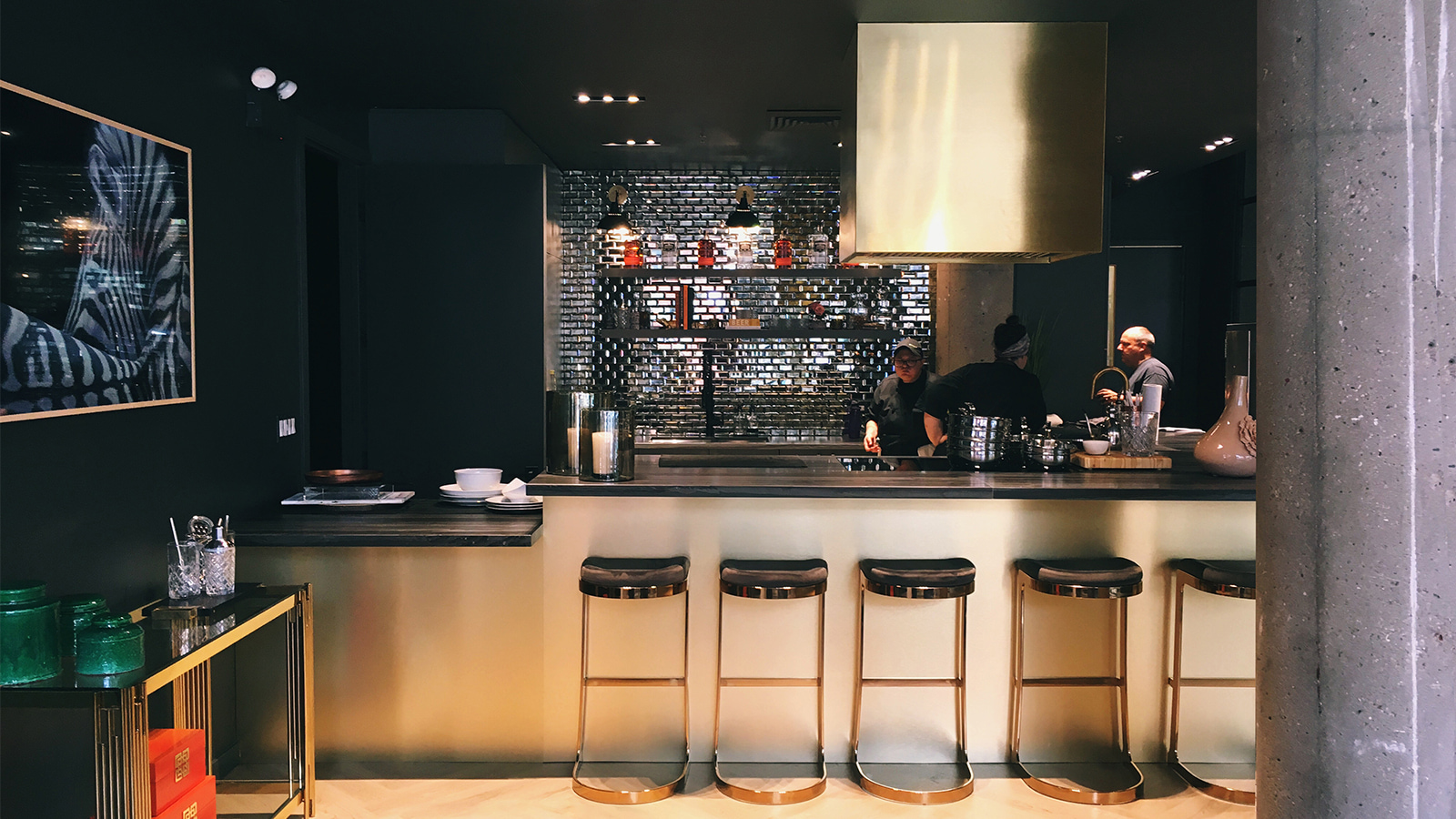How to design a healthy home from a former hospital designer

With the prevalence of carcinogenic building practices of the past and present (Lead, Asbestos, VOCs), creating a home that promotes health and wellness should be top of mind.
Having experience with working on major hospital projects throughout the United States at one of the top architectural firms that specializes in health and wellness, there are many applicable practices that can be brought into crafting the perfect home or commercial space.
It has long been known that buildings can greatly impact health and well-being. On the extreme end, Sick Building Syndrome (SBS) can cause occupants to experience acute health effects that correlate to time spent in a particular space. The symptoms include headaches, cough, dry or itchy skin, dizziness, nausea, difficulty concentrating and fatigue.
With careful attention to health-focused design principles and guidance from professionals, you can develop a space that not only looks appealing but actively supports your physical and mental well-being. Even with the vast outdoor activities in Colorado, a huge percentage of time is spent indoors. To create spaces that promote health and wellness, special focus should be paid to air, water, natural light, movement, thermal comfort, sound, and materials.
The Foundation of Home Health
The exterior envelope of a house (walls, roof, foundation) is undeniably the cornerstone to a healthy and sustainable home. If you closely examine construction that is happening throughout Denver, you might start to notice that contractors often cheap out on the exterior construction to save money. This is especially true on the higher end homes. The future homeowners will end up paying for it exponentially over the lifetime of the house with higher energy bills, uncomfortable drafts, moisture issues, and diminished indoor air quality.
When constructing a house for wellness and sustainability, special attention must be placed on properly detailing continuous insulation, meticulous air sealing, and using high-performing windows and doors. Continuous insulation prevents thermal bridging. This eliminates cold spots where condensation could have formed, and decreases your chances of mold growing and structural damage.
Ensuring proper air sealing through caulking, weatherstripping, and vapor barriers stops uncontrolled air infiltration and helps to prevent drafts, excess humidity, and outdoor pollutants or allergens from entering your home. This means your HVAC system doesn’t need to work as hard and that it will consume less energy.
Energy-efficient windows and doors with proper weatherproofing create critical barriers against air leakage and moisture intrusion, which are often the most vulnerable points in an otherwise well-constructed building envelope.
When these sustainable building components work together as an integrated system, they create a protective thermal barrier that maintains consistent indoor temperatures, prevents costly moisture damage, and dramatically reduces monthly energy bills. With these measures, a house will be a comfortable, healthy home that delivers peak energy performance for decades.
The Lungs of the House
Indoor air can be 2-5 times worse than outdoor air. According to the American Lung Association, the Denver metro has some of the most ozone-polluted air in the country. A standard ducted HVAC system pushes a large quantity of air throughout a house, this makes the HVAC system one of the most important systems in a new home.
Designing an HVAC system becomes of utmost importance when it comes to building a beautiful, healthy home. An HVAC system should be designed to incorporate the use of high-efficient air filters, either MERV 13 or HEPA. This enables it to capture particles from wildfire smoke and other pollutants. It is also a good idea to look into having an activated carbon filter to help neutralize ozone and volatile organic compounds (VOCs). However it is important to know that if you have an existing system, switching to a higher MERV certification can end up straining your HVAC system because the filter material is much finer in order to be able to capture the miniscule particles. There is a balance that is unique to each home.
Volatile organic compounds are gases that seep out from things like fresh paint, new carpets, and new furniture. While that new scent might seem exciting and pleasant; VOCs can trigger headaches, respiratory issues, and other health problems, especially in children and sensitive individuals. Choosing low-VOC products is important to having your home start off being healthy instead of letting things off-gas for a while after moving in.
To ensure that the indoor air is fresh, ventilation should be an important consideration. There are different levels of automation that HVAC systems can provide to address making sure that the system is running in the healthiest manner. On the days where the outdoor air is of poor quality such as ozone action days or during wildfire events, it is important to have the ability to control the method of ventilation and be able to switch the system into recirculation mode. Air quality sensors should also be installed that monitor both PM 2.5 and ozone levels.
Energy recovery ventilators (ERV) or Heat Recovery Ventilators (HRV) are an important element of any modern HVAC system. Fresh outside air is very important for maintaining a healthy home but there might be a major difference in temperature between the interior and exterior. While these ventilators constantly pull fresh air in from outside, they use the warmth from outgoing stale indoor air to pre-heat (or pre-cool) the incoming air from the exterior, saving up to 80% of the energy that would normally be lost. An HRV not only helps maintain excellent fresh air quality but also reduces your energy bills.
Mold flourishes in damp, dark environments and can silently lurk behind walls and in bathrooms. Beyond the musty odor and unsightly dark patches, mold poses an array of health risks. This includes triggering asthma and causing respiratory issues. To combat mold, a whisper quiet bathroom fan that is on a timer is important for eliminating ambient smell and mold issues. A homeowner should regularly inspect damp-prone areas, fix water issues promptly, and maintain indoor humidity below 60%.
In Colorado, radon is a consistent issue no matter if you are located in Vail, Denver or Colorado Springs. Radon is a colorless, odorless radioactive gas that naturally seeps into homes from the ground and can cause lung cancer when trapped indoors at high levels. Basement bedrooms or any space in the basement that will be occupied for periods of time need to be tested at least every 2 years. Radon is not evenly distributed and so one house might test at 2pCi/L and the house next door might test at 5pCi/L. Radon mitigation can start from how a building is constructed to an active fan system that pushes radon out above the roof.
Ensuring Clean Water
When moving into a new home, whether it was custom built or an existing house, testing the water might not be top of mind but should be. While local utilities diligently test water at treatment plants and release water quality reports, water can acquire undesirable pathogens on the way to the tap. With many municipalities still identifying lead in their water supply lines, it is a major concern. Lead exposure can cause serious health problems including developmental delays and learning disabilities in children, high blood pressure and kidney damage in adults, among many other debilitating and sometimes permanent health effects.
Replacing lead service lines has been one of the major news topics throughout the United States since it came to the forefront with Flint, MI in 2014. Some water companies, like Denver Water, provide free testing, making it an easy decision to ensure health and wellness. However if subsidized testing is not available, it is worth the cost to get a test to ensure one of the basic necessities of life is clean.
If lead is identified, the best possible lead mitigation is using filters that are NSF 53 certified. There are other NSF/ANSI certifications for filtering water but the one to focus on for reducing lead content by 99.9% is NSF/ANSI 53.
Unfortunately, there are not currently any good whole house NSF 53 certified filters. This is because lead reduction requires specific types of filtration media and longer contact time with the water than most whole-house systems provide. Whole-house systems are usually designed for sediment, chlorine, and general water conditioning rather than heavy metal reduction. The easiest way to start filtering water for lead is to get a water pitcher like Brita. The next level of filtering can be provided with an undersink filter that is placed on the cold water supply. Coupled with a refrigerator filter that is NSF 53 certified, under sink filters might be the best method to get full lead filtering coverage.
There are Reverse osmosis (RO) whole house filtration systems that will remove lead but that is typically not the best option since the process is very wasteful. A typical RO system uses four gallons of water per gallon of filtered water. There are higher efficiency RO systems that are improving the waste but in general, filtration is the best method.
Enlightened Design
Lighting for a sustainable, healthy home requires a strategic approach that maximizes natural light throughout all living spaces. Window placement should be carefully planned to optimize daylight exposure, with south-facing windows serving as the primary source of consistent, balanced illumination throughout the day. East and west-facing windows capture the dynamic morning and evening light, though their placement requires careful consideration due to the intense solar heat gain and intense light from the low-angle position of the sun. North-facing windows offer the advantage of providing steady, diffused natural light without harsh direct sunlight, making them ideal for spaces requiring consistent illumination like home offices or art studios. For deeper interior spaces, skylights can be an excellent way to light up space.
Designing the artificial lighting system should complement the natural light strategy with layered lighting that includes ambient, task, and accent lighting. With the rise of LED lighting, there are many advantages that include dimming or color control. You can also turn your home into a smart home, using options ranging from simple to complex smart systems. At the most simple level, having dimmers set to a lower lighting level can help save energy. At a more luxurious level, Lutron RA provides the best whole-home lighting controls.
The psychological benefits of thoughtful lighting extend beyond energy savings, as adequate natural light and properly designed artificial lighting can reduce symptoms of seasonal affective disorder, improve mood and productivity, and help regulate circadian rhythms that affect sleep quality and hormone balance. LED fixtures that have adjustable color temperatures can be set to mimic the natural progression of daylight from cool morning light to warm evening tones, supporting cognitive function while reducing stress and anxiety caused by harsh or inadequate lighting. This can especially be helpful if eye strain, sleep issues, or concentration difficulties are major life concerns, with particular benefits for individuals who may be more sensitive to lighting quality.
A House That Grows
Often missed with new construction is everything outside of the building. At Land Agency, the site is one of the most important elements for creating a healthy, sustainable home. Strategic plantings influence everything from curb appeal to providing a beneficial microclimate for the house. Smart deciduous tree placement can have a major effect on reducing a house’s solar heat gain during the summer and allowing the sun to shine in during the winter. Trees naturally provide cooling and windbreaks that can reduce energy costs by up to 25%, while also improving air quality and creating peaceful outdoor spaces that encourage physical activity and mental restoration.
Native and drought-resistant plants used throughout the landscaping can help minimize watering while providing natural habitat for beneficial insects and birds that help control pests. Coloradoscaping, a specific xeriscape gardening approach for Colorado, is a great framework for creating an outdoor environment that supports both human wellness and ecological health while reducing long-term maintenance costs. Edible plants can be incorporated into the landscape to provide fresh fruits, vegetables, or herbs with the added benefit of being a stress-reducing activity for some. Having beautiful landscaping provides a great connection between the indoor and outdoor space, setting the tone for your mental wellbeing. With the information provided, you can craft a beautiful, sustainable home. Remember, a healthy building is more than just a roof over your head, it's the foundation for a healthier you.



